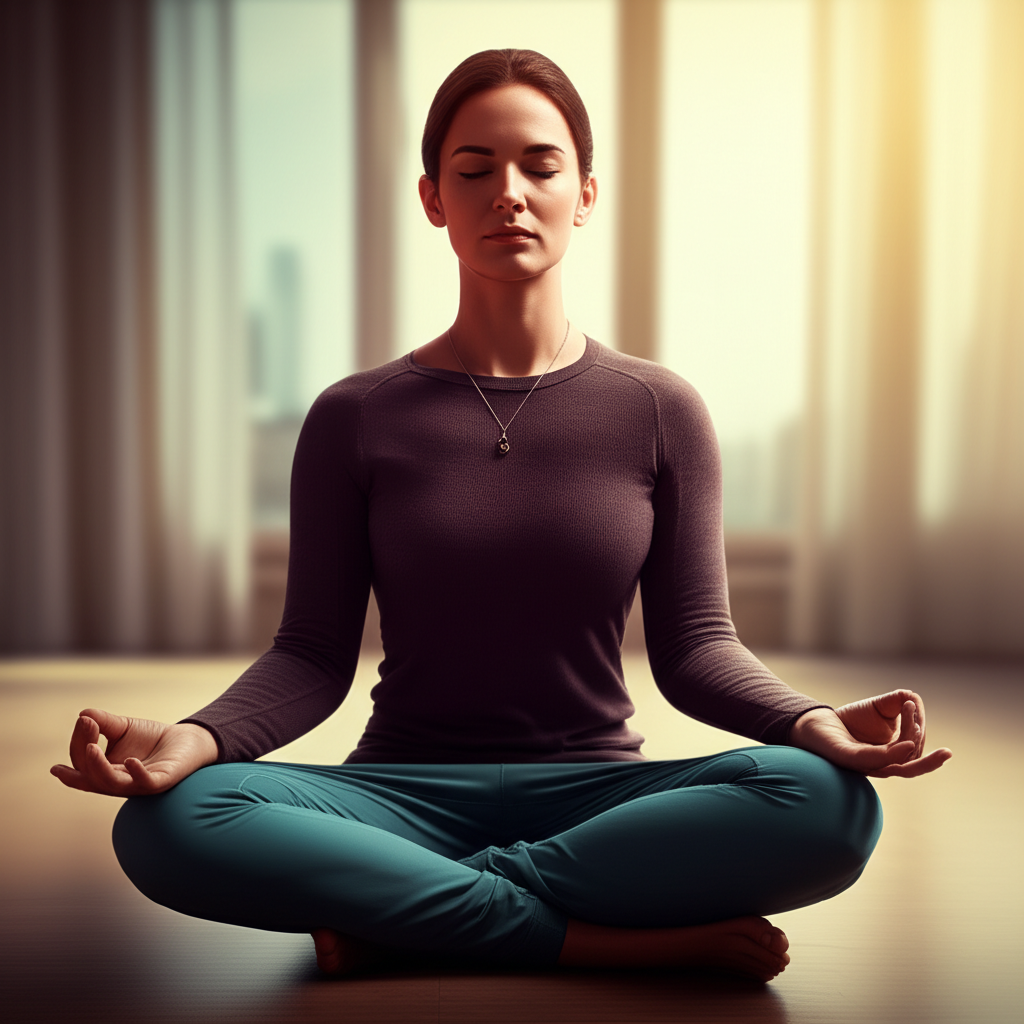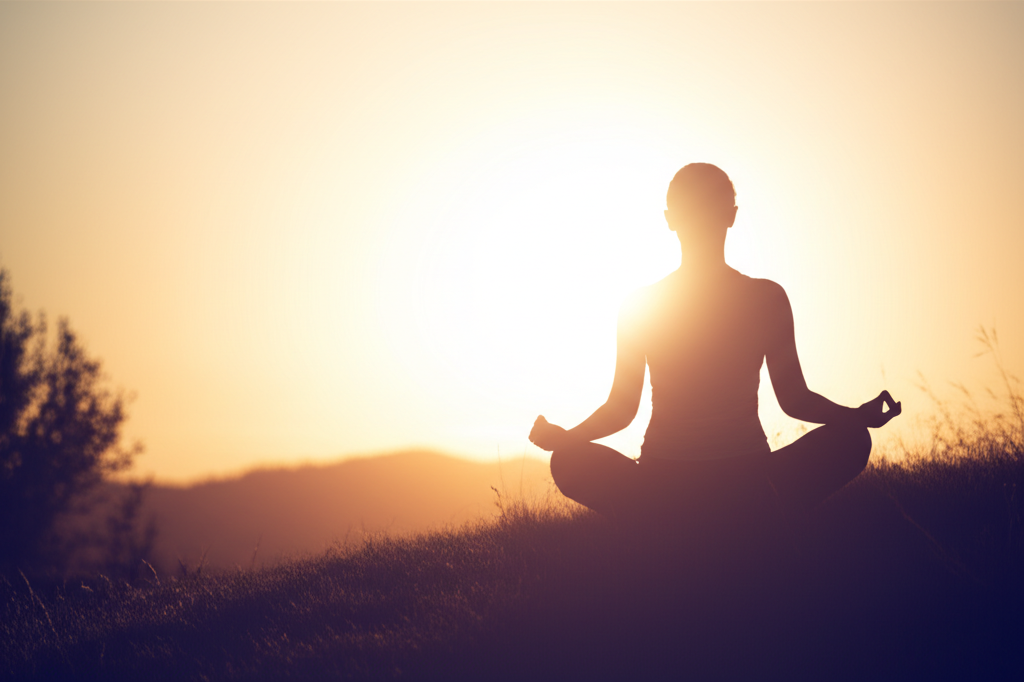Now Reading: 5 Simple Mindfulness Exercises for Instant Calm Anywhere
-
01
5 Simple Mindfulness Exercises for Instant Calm Anywhere
5 Simple Mindfulness Exercises for Instant Calm Anywhere

5 Simple Mindfulness Exercises You Can Do Anywhere, Anytime for Instant Calm
Life today often feels like a non-stop whirlwind, doesn’t it? Between work, family, social commitments, and the endless scroll of information, it’s incredibly easy to feel overwhelmed, stressed, and disconnected from the present moment. We all yearn for a little more peace, a sense of calm amidst the chaos, and a way to truly be here, now, feeling grounded and centered.
That’s where mindfulness comes in. At its heart, mindfulness is simply the practice of paying attention to the present moment, intentionally and without judgment. It’s about noticing your thoughts, feelings, bodily sensations, and the world around you, exactly as they are, without getting swept away by them. Think of it as gently anchoring yourself to the “here and now,” like a boat gently tethered in calm waters.
The beautiful thing about mindfulness is its incredible power to reduce stress, manage anxiety, improve focus, and generally enhance your well-being. And here’s the best part: you don’t need a special cushion, hours of free time, or a silent retreat. These are simple mindfulness exercises you can truly weave into your day, anywhere, anytime, bringing moments of peace into your everyday routine. Let’s dive into your new toolkit for instant calm!
Why Practice Mindfulness? (The Evidence-Based Benefits)
While mindfulness might sound simple, its impact is profound. Research consistently shows how engaging in mindful practices can positively transform your mental and physical health. Here’s why integrating these simple techniques into your life can be so wonderfully beneficial:
- Mental Clarity & Focus: In a world brimming with distractions, mindfulness helps declutter your mind, improving your attention and concentration. It’s like sweeping away the mental cobwebs so you can think more clearly and with greater focus on what truly matters.
- Stress & Anxiety Reduction: One of the most widely recognized benefits is its ability to gently calm your nervous system. By bringing your awareness to the present, you interrupt the often-exhausting cycle of worry and rumination, helping to lower blood pressure and reduce the uncomfortable physiological symptoms of stress and anxiety.
- Emotional Regulation & Resilience: Mindfulness teaches you to observe your emotions as they arise, without immediately reacting or being overwhelmed by them. This builds emotional resilience, allowing you to respond to challenges with greater wisdom and intention, rather than on autopilot.
- Enhanced Well-being: Overall, a consistent mindfulness practice can lead to improved mood, greater happiness, better sleep, and a deeper sense of inner peace. It helps you navigate everyday mental health challenges with more grace and ease, fostering a more positive outlook on life.
It’s important to remember, as your compassionate guide, that mindfulness isn’t a “quick fix” for all of life’s problems. It’s a practice, a skill you build over time, and like any new skill, it gets easier and more effective with gentle, consistent effort. Be patient and kind to yourself through the process – every moment of presence is a step forward.
Your Everyday Toolkit: 5 Simple Mindfulness Exercises
Ready to discover how truly easy it is to weave moments of calm into your day? Here are five accessible techniques that you can start practicing right now:
1. Mindful Breathing (Your Ever-Present Anchor)
- Why it works: Your breath is always with you, making it the perfect immediate anchor to the present moment. Focusing on your breath directly calms the nervous system and brings immediate, gentle focus back to yourself.
- How to do it: Find a comfortable position, whether you’re sitting, standing, or lying down. Gently bring your attention to your breath. Notice the sensation of the air entering and leaving your body. Perhaps you feel your belly gently rising and falling, or the cool air moving through your nostrils on the inhale and warmer air on the exhale. Don’t try to change your breath, just observe it exactly as it is. When your mind wanders (and it will, that’s perfectly normal!), simply and gently bring your attention back to your breath. Try this for just 30 seconds to a few minutes. For deeper calm, explore variations like 4-7-8 breathing or box breathing if you feel inclined.
- Anytime/Anywhere application: While waiting in line at the grocery store, before a big meeting, during a short work break, or when you first wake up in the morning.
2. The 5-4-3-2-1 Grounding Technique (Engage Your Senses)
- Why it works: This powerful grounding technique pulls your attention away from racing thoughts and into your immediate physical environment by engaging your five senses. It’s incredibly effective for moments of overwhelm, anxiety, or when your mind feels like it’s spinning.
- How to do it:
- 5 things you can SEE: Look around and name five things you can see (e.g., “my computer screen,” “the green plant on the desk,” “the patterned curtain,” “the light switch,” “the shadow on the wall”).
- 4 things you can FEEL: Notice four things you can feel (e.g., “the chair against my back,” “my feet on the cool floor,” “the soft texture of my shirt,” “the gentle breeze from the window”).
- 3 things you can HEAR: Listen carefully and name three things you can hear (e.g., “the soft hum of the refrigerator,” “birds chirping outside,” “my own gentle breathing”).
- 2 things you can SMELL: Identify two things you can smell (e.g., “the faint scent of coffee,” “my hand lotion”). If you can’t smell anything, name two smells you enjoy.
- 1 thing you can TASTE: Name one thing you can taste (e.g., “my last sip of water,” “the lingering taste of my breakfast”). If you can’t taste anything, name one taste you enjoy or are craving.
- Anytime/Anywhere application: During moments of intense anxiety, when feeling overwhelmed in a crowded place, when you enter a new or unfamiliar environment, or while commuting.
3. Mindful Awareness of Daily Activities (Transform the Mundane)
- Why it works: This exercise turns routine, often unconscious tasks into wonderful opportunities for presence and awareness, helping you foster mindfulness throughout your entire day. It’s about bringing intention to the small moments.
- How to do it: Choose one simple, everyday activity you usually do on autopilot. This could be drinking a glass of water, washing your hands, walking to your car, or brushing your teeth. As you perform the activity, focus entirely on the sensory experience. If you’re drinking water, notice the coolness of the glass in your hand, the temperature of the water as it touches your lips, how it feels as you swallow, its subtle taste. If washing hands, feel the water, the texture of the soap, the gentle bubbles, the sensations on your skin as you rub and rinse. Engage all your senses fully, as if doing it for the very first time.
- Anytime/Anywhere application: While eating a meal, washing dishes, walking across a room, waiting for your coffee to brew, or even sending an email.
4. The One-Minute Pause (Your Personal Reset Button)
- Why it works: This is a quick, intentional break that allows you to reset and re-center, preventing automatic, reactive responses and fostering more conscious, thoughtful choices. It’s a fantastic way to break free from the feeling of always being “on” and rushed.
- How to do it: When you feel a surge of emotion, a moment of confusion, or simply realize you’re rushing, gently hit your internal “pause” button. This simple STOP method can be incredibly powerful:
- S – Stop: Whatever you’re doing, just stop for a moment. This might mean pausing your task, your conversation, or your thoughts.
- T – Take a breath: Take one conscious deep breath, noticing the full journey of the inhale and exhale. Let it be a gentle sigh of relief.
- O – Observe: Notice what’s happening within you (any thoughts, emotions, or sensations) and around you, without judgment. Just observe, like watching clouds float by.
- P – Proceed: With this new awareness and a sense of calm, proceed with whatever you were doing, but with more intention, presence, and perhaps a new perspective.
- Anytime/Anywhere application: Before reacting to a challenging email, during a break between tasks, when you feel frustration building, or before making a quick decision.
5. Body Scan (Connect with Yourself)
- Why it works: The body scan increases interoception (your awareness of internal bodily sensations), helping you identify and gently release tension, and fostering a deep sense of self-compassion by truly tuning into your physical self. It’s a wonderful way to check in with your body.
- How to do it: Find a comfortable position, either sitting or lying down. Gently close your eyes if comfortable, or soften your gaze. Bring your attention to your feet. Notice any sensations there – warmth, coolness, tingling, pressure, or even nothing at all. Without judgment, simply observe. Then, slowly and kindly move your attention up through your body: your ankles, calves, knees, thighs, hips, abdomen, chest, back, arms, hands, neck, face, and finally, the top of your head. As you scan each area, simply notice what’s there. If you find tension, acknowledge it, and if possible, invite a sense of softness or release with your breath, but don’t force it. This can be a very brief scan (1-2 minutes) or a longer, more detailed one.
- Anytime/Anywhere application: Before sleep to release the day’s tension, during a seated break at work, or even briefly while standing in a queue.
Tips for Integrating Mindfulness into Your Busy Life
As your trusted friend, I want to emphasize that weaving these practices into your life isn’t about perfection; it’s about gentle progress, one small moment at a time. Here are some tips to help you embrace this journey with ease:
- Start Small: Don’t feel pressured to do a 20-minute meditation right away. Begin with just 1-2 minutes daily of any exercise. Consistency is far more important than duration, and those small moments truly add up!
- Be Patient & Kind to Yourself: Your mind will wander. That’s what minds do! The practice isn’t about stopping thoughts; it’s about gently, compassionately bringing your attention back each time it strays. Approach yourself with the same warmth and understanding you’d offer a dear friend learning something new.
- Use Gentle Reminders: Set a subtle alarm on your phone for a one-minute pause, leave a sticky note on your computer, or use environmental cues like a red light to remind you to practice mindful breathing.
- Experiment: Not every exercise will resonate with everyone, and that’s perfectly okay. Try them all, and then lovingly focus on the ones that feel most natural and beneficial for you. Your practice is uniquely yours.
- Combine with Existing Habits (Habit Stacking): Link a mindfulness practice to something you already do every day. For example, make your morning coffee a mindful moment, or practice a brief body scan just before you fall asleep.
When to Seek Additional Support (Empathetic Disclaimer)
Mindfulness is a truly powerful and evidence-based self-care tool for navigating everyday mental health challenges, building resilience, and enhancing your overall well-being. It offers incredible support in managing stress and anxiety, helping you feel more in control.
However, as your compassionate guide, I want to be absolutely clear: mindfulness is not a substitute for professional mental health support. If you are experiencing severe or persistent symptoms of anxiety, depression, trauma, or other mental health conditions, please know that it’s a sign of immense strength and self-care to reach out for professional help. Therapists, counselors, and medical professionals can provide specialized support and guidance tailored to your unique needs. These simple practices can be a wonderful, complementary addition to professional care, but never a replacement.
If your challenges persist or feel overwhelming, please, with kindness to yourself, consider consulting a qualified mental health professional. Your well-being is paramount.
Embrace Your Calm: Your Journey Starts Now
The beauty of mindfulness lies in its profound accessibility and comforting simplicity. You truly hold the power to cultivate moments of peace and presence, no matter how busy or chaotic your life feels. These five simple exercises are your gentle invitation to pause, to reconnect with yourself, and to lovingly anchor yourself to the calm that always resides within you.
By dedicating just a few moments each day, consistently and with kindness, you can significantly improve your overall well-being, reduce daily stress, and build incredible resilience against life’s inevitable ups and downs. Imagine feeling more centered, more present, and more at peace, simply by weaving these small practices into your routine.
Why not take a moment right now? Pick just one of these exercises that resonates most with you, dedicate a minute or two to it, and gently notice the difference it makes. We’d absolutely love to hear about your experience and insights in the comments below! Your journey to a calmer, more present you begins with a single, mindful breath.




















